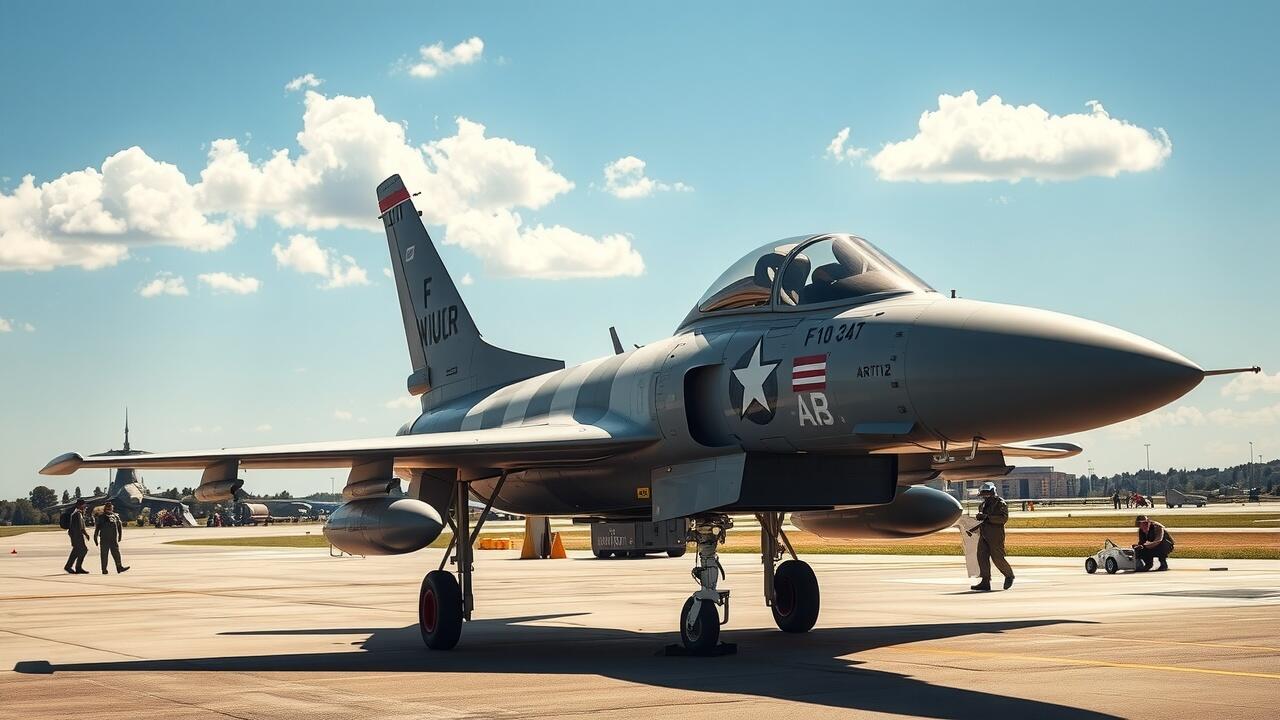
Military Applications
The Delta Dart was designed primarily as an interceptor, serving a critical role in air defense systems during the Cold War era. Its high speed and altitude capabilities allowed it to engage and destroy enemy bombers before they could threaten strategic targets. The aircraft's powerful engines and advanced radar systems positioned it as a formidable presence in the skies, ensuring protection for key military installations.
In addition to its interceptor role, the Delta Dart participated in various military exercises which demonstrated its capabilities. Pilots trained extensively to maximize the aircraft's performance, ensuring readiness for potential engagements. Despite its limited operational timeframe, the Delta Dart’s influence on air defense strategies was significant, shaping the development of future fighter jets.
Continue reading this article for more information.
Role in Air Force Operations
The Delta Dart primarily served as a high-speed interceptor, designed to counter aerial threats during the Cold War era. Its impressive speed and altitude capabilities allowed it to engage enemy bombers effectively. This aircraft played a crucial role in establishing air superiority, reflecting the strategic priorities of the U.S. Air Force during a time marked by the looming threat of Soviet aggression.
Integration within the Air Force involved extensive training for pilots to utilize the Delta Dart’s advanced avionics and missile systems. Regular drills and coordinated air defense exercises showcased its potential in real-world scenarios. Though it faced challenges, such as maintenance complexities and evolving mission requirements, the Delta Dart remained a symbol of American aerospace engineering and tactical readiness in a rapidly changing geopolitical landscape.
User Reviews and Feedback
Pilots and aviation enthusiasts have shared a range of experiences regarding the Delta Dart. Many have praised its impressive speed and agility, highlighting its effectiveness in air-to-air combat scenarios. Some pilots noted that the aircraft's design allowed for impressive maneuverability, which was crucial during engagements. However, there were also criticisms regarding the aircraft’s avionics and outdated systems, which made it challenging to compete with newer aircraft in complex combat environments.
Feedback from ground crew members pointed to the Delta Dart's maintenance needs as a significant concern. While some appreciated the straightforward design that allowed for relatively easy access to components, others reported frustrations with the lengthy servicing processes. Cost considerations also emerged as a common theme in reviews, as keeping the aircraft operational required substantial budget allocations, impacting overall operational effectiveness in some units.
Pilot Experiences and Insights
Pilots often highlight the Delta Dart's unique handling characteristics, particularly its impressive performance at high speeds and altitudes. The aircraft's design allowed for agile maneuvers in challenging environments. Many pilots enjoyed the adrenaline rush associated with flying the Dart during complex missions. The tactile feedback provided by the control surfaces contributed to a sense of confidence, enabling them to navigate through adversarial airspace with precision.
Feedback regarding cockpit ergonomics varied among users. Some appreciated the intuitive layout, which facilitated quick access to critical controls during high-pressure situations. Others noted that certain instruments were less accessible, making it difficult to manage various systems simultaneously. Overall, the experience of flying the Delta Dart fostered a strong sense of camaraderie among pilots, who often exchanged tips and strategies to maximize the aircraft's capabilities during their operational flights.
Maintenance and Support
The Delta Dart required a dedicated maintenance regimen to ensure its operational readiness. Technicians were trained specifically for the complexities of the aircraft's systems. Regular inspections were essential to maintaining performance and safety standards. Over time, certain components became known for higher failure rates, necessitating more frequent checks and thorough evaluations.
Costs associated with servicing varied, influenced by the availability of parts and the demand for specialized labor. Budget constraints often challenged maintainers in ensuring the aircraft remained mission-capable. While some users reported that certain tasks could be performed in-house, others preferred outsourcing to specialized facilities to ensure adherence to stringent military standards. This approach sometimes led to delays, impacting the aircraft's availability for critical operations.
Servicing Requirements and Costs
The Delta Dart required regular servicing to maintain optimal performance and safety. Maintenance intervals were set according to flight hours, with key components needing thorough inspections after specific milestones. This routine oversight ensured that the aircraft remained operational and met stringent safety standards. Additionally, aircraft systems required specialized tools and trained personnel to perform tasks efficiently, contributing to overall operational readiness.
Cost considerations for servicing the Delta Dart varied based on several factors. Parts availability played a critical role; some components could be sourced easily, while others required longer lead times or were more costly. Labor costs also impacted the overall maintenance expenses, especially when factoring in the expertise needed for specific systems. Budget constraints prompted some military branches to seek cost-effective solutions while ensuring the aircraft's reliability remained uncompromised.
FAQS
What was the Delta Dart primarily used for?
The Delta Dart was primarily used as an interceptor and air superiority fighter by the United States Air Force during the Cold War, designed to protect American airspace against potential threats.
How did pilots feel about flying the Delta Dart?
Pilot feedback on the Delta Dart was mixed; while some praised its impressive speed and altitude capabilities, others noted challenges in handling and its demanding flight characteristics, which required significant skill.
What were the main maintenance requirements for the Delta Dart?
The Delta Dart required regular maintenance checks that included inspections of its engines, airframe, and avionics systems. The costs associated with maintenance were a consideration for operational units, given the complexity of the aircraft.
Did the Delta Dart have any notable combat experience?
The Delta Dart did not see significant combat action, as it was primarily used during peacetime for training and air defense missions. However, it played a role in maintaining air superiority during tense periods of the Cold War.
What improvements were made to the Delta Dart throughout its service?
Over its operational life, the Delta Dart received various upgrades, including enhancements to its avionics, armament capabilities, and engines to improve performance and reliability as technology evolved.